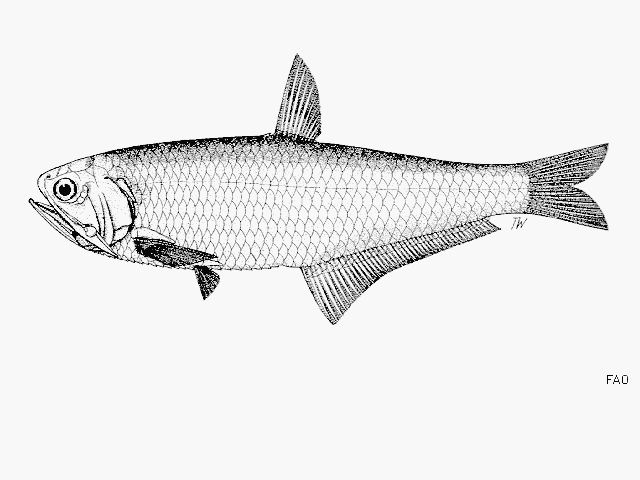| Engraulidae (Anchovies), subfamily: Coiliinae |
| 15.5 cm SL (male/unsexed) |
|
pelagic-neritic; brackish; marine; depth range 0 - 50 m, oceanodromous |
| Indian Ocean: eastern coasts of India; possibly also Myanmar. |
|
Dorsal spines (total): 0-0; Anal spines: 0-0; Anal soft rays: 38-44. Belly with 26 or 27 keeled scutes from isthmus to anus. Tip of snout a little above level of eye center. Maxilla moderate, projecting at most to halfway to pectoral fin base; first supra-maxilla small; angle of mouth rather oblique, teeth of lower jaw slightly enlarged. An indistinct dark blotch behind upper part of gill opening and a faint dark line along back. |
| Presumably schooling, occurring mostly inshore and entering estuaries and also Lake Chilka in India, thus able to tolerate lowered salinities. More data needed based on correct identifications. If this is the species being referred to in Ref. 6841, then the young feeds on surface plankton, chiefly on prawn larvae, but also small fishes (e.g. Stolephorus) and cypris. Apparently common. |
|
Data deficient (DD); Date assessed: 12 February 2018 Ref. (130435)
|
| harmless |
Source and more info: www.fishbase.org. For personal, classroom, and other internal use only. Not for publication.
